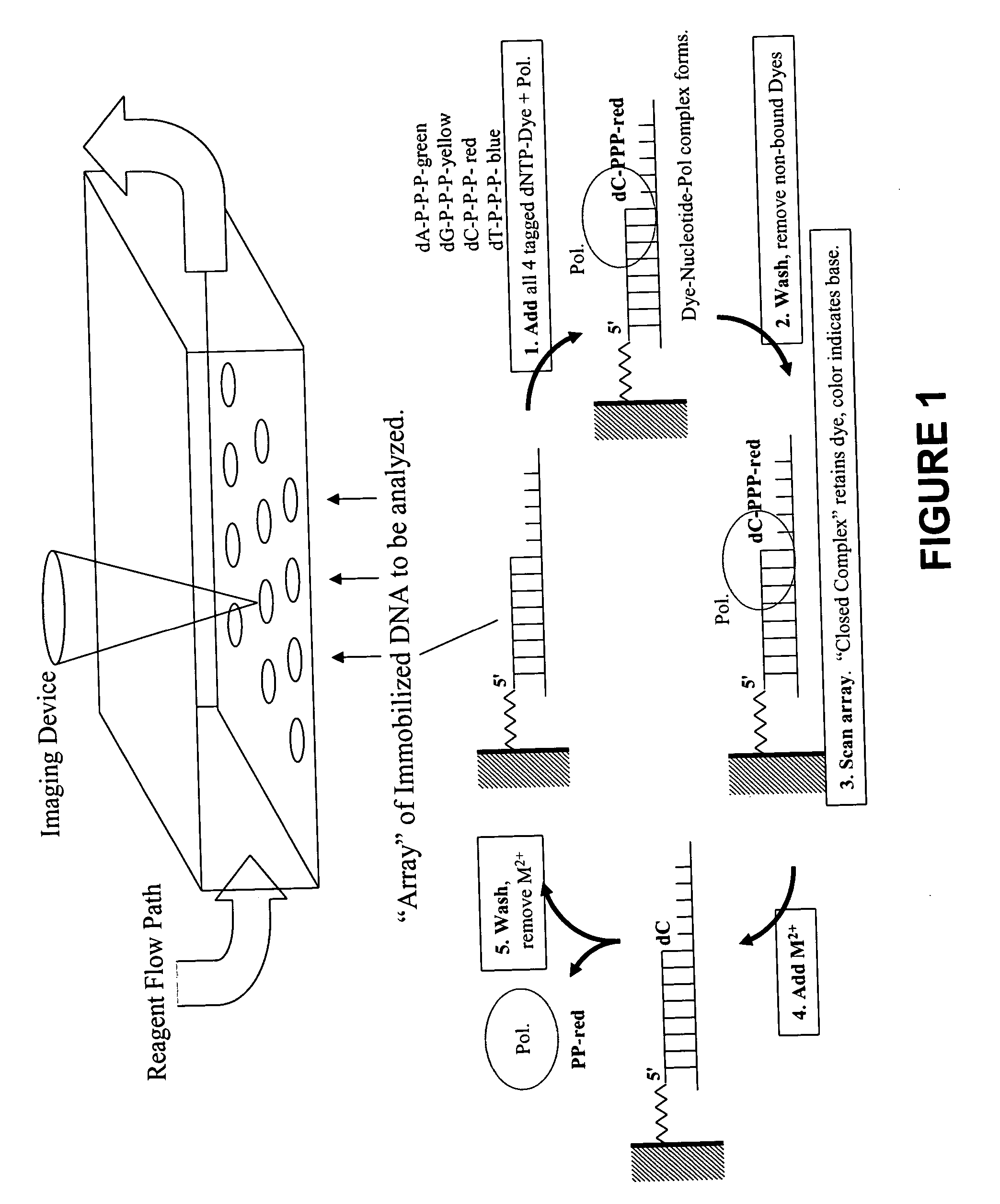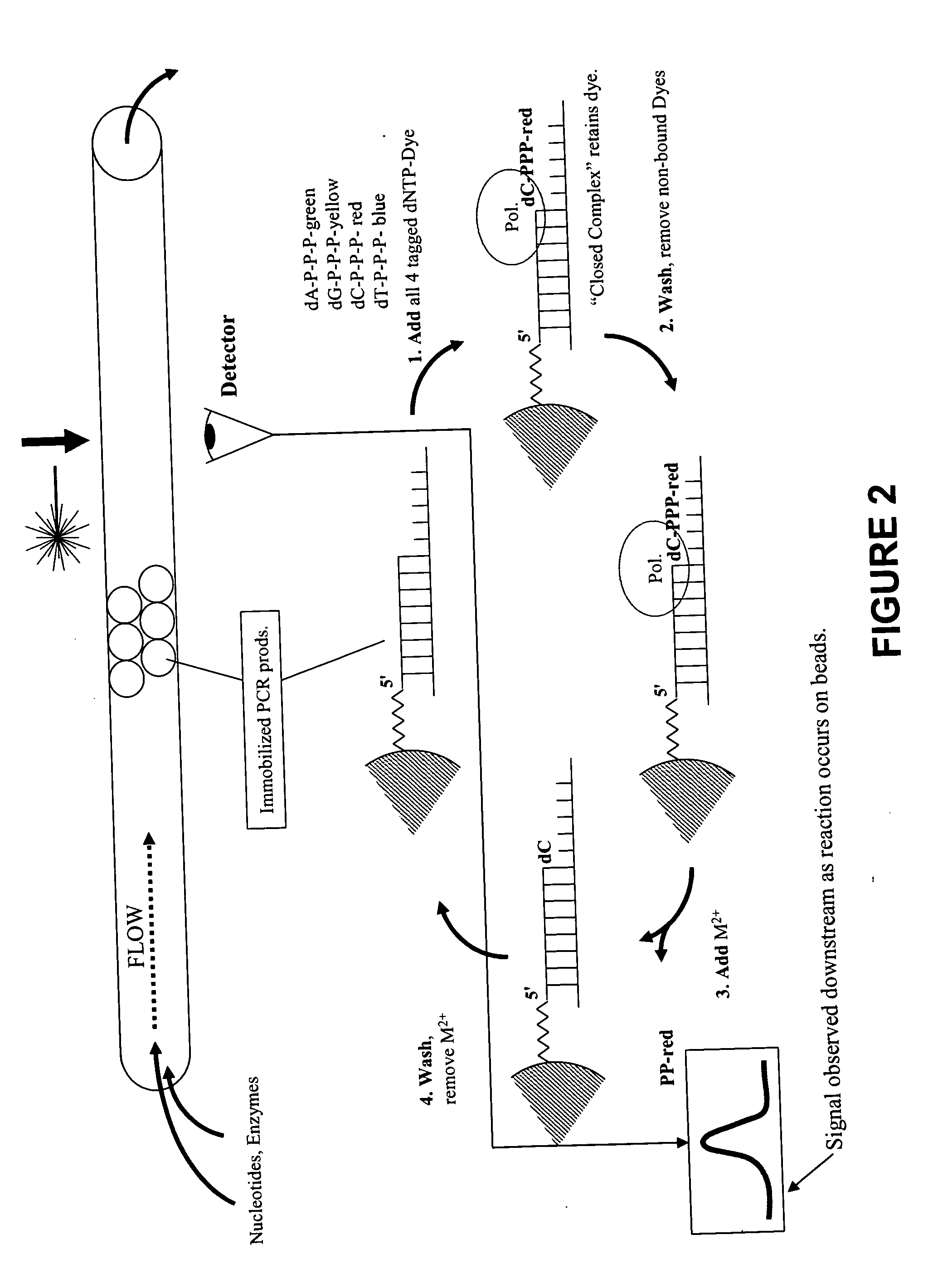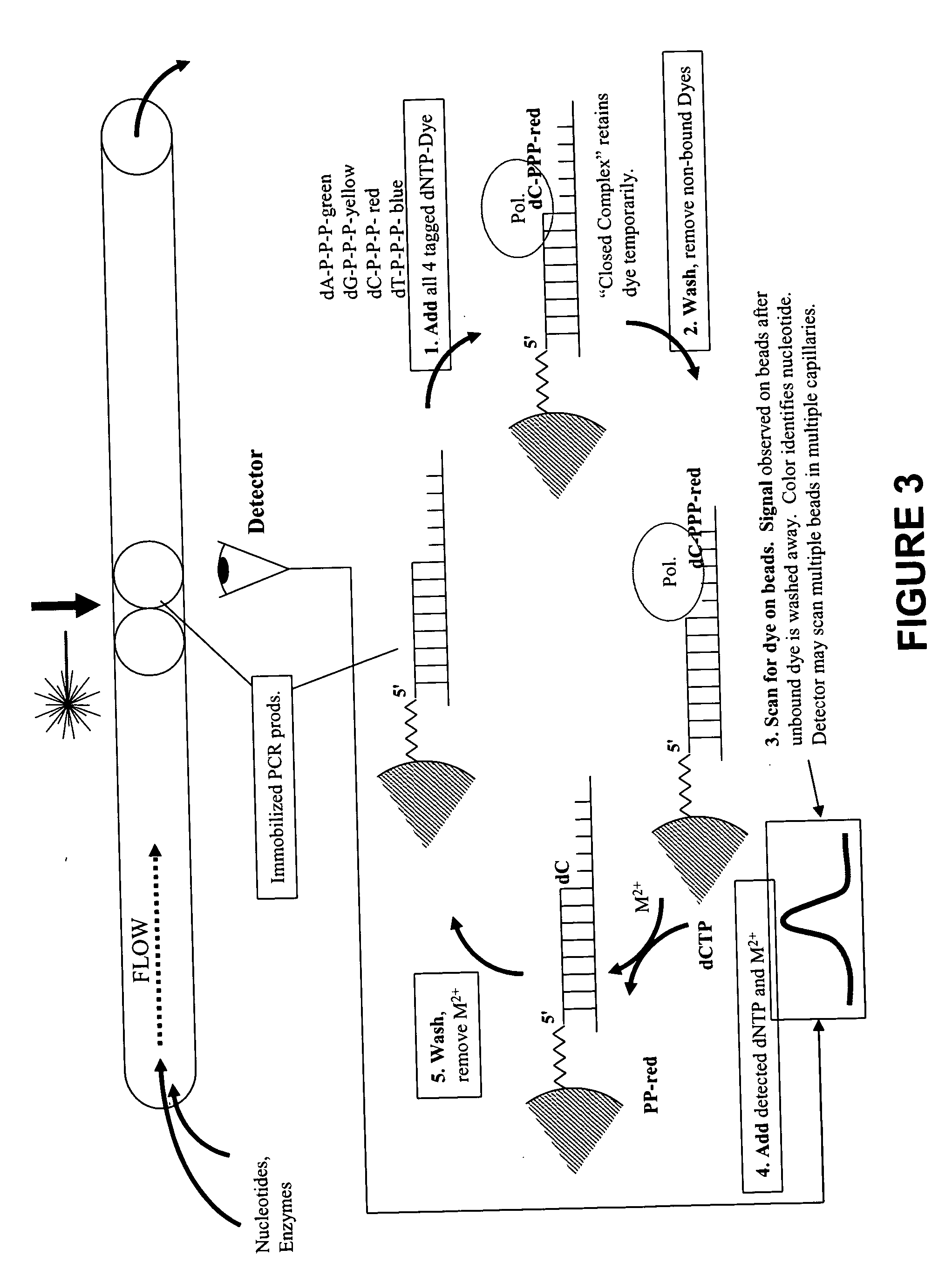Rapid parallel nucleic acid analysis
a technology of parallel sequencing and nucleic acids, applied in the field of high throughput, parallel sequencing of polynucleotides, can solve the problems of difficult sequencing of several consecutive nucleotides with the same base, limitations of pyrosequencing, etc., to eliminate the non-specificity of pyrosequencing reaction, effective determination of dna sequence, and ultra-high throughput
- Summary
- Abstract
- Description
- Claims
- Application Information
AI Technical Summary
Benefits of technology
Problems solved by technology
Method used
Image
Examples
example 1
Demonstration of the Formation of the “Closed Complex”
[0079]FIG. 5 presents evidence of the formation of this type of stable closed complex using fluorescently labeled nucleotides. It clearly demonstrates that the complex can be detected as described herein. Polymerase reactions (20 ul) were performed in (25 mM Tris:Borate, pH=7.5, 0.1 mM EDTA, 10% glycerol) and contained: 50 pmoles of primed template as indicated, + / −20 pmoles of labeled, positively charged ddGTP and / or ddATP; + / −3 pmoles FY7 DNA polymerase. Reaction products were separated on 7% PAGE in 50 mM Tris:Borate, pH=7.5. Complex formation is only observed when polymerase, primer template, and the correct nucleotide are present.
[0080]FIG. 6 demonstrates that the “closed complex” can be formed in up to 50 mM EDTA, can be destroyed with SDS, and competed with “cold” competitor. Reactions (20 ul) were performed in (25 mM Tris:Borate, pH=7.5, 50 or 0.1 mM EDTA as indicated on the Figure, and 10% glycerol) and contained: 50 pm...
PUM
| Property | Measurement | Unit |
|---|---|---|
| Chemiluminescence | aaaaa | aaaaa |
Abstract
Description
Claims
Application Information
 Login to View More
Login to View More - R&D
- Intellectual Property
- Life Sciences
- Materials
- Tech Scout
- Unparalleled Data Quality
- Higher Quality Content
- 60% Fewer Hallucinations
Browse by: Latest US Patents, China's latest patents, Technical Efficacy Thesaurus, Application Domain, Technology Topic, Popular Technical Reports.
© 2025 PatSnap. All rights reserved.Legal|Privacy policy|Modern Slavery Act Transparency Statement|Sitemap|About US| Contact US: help@patsnap.com



